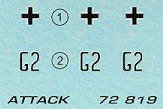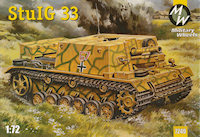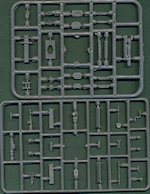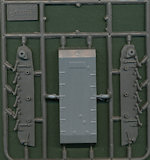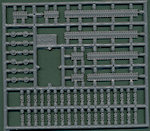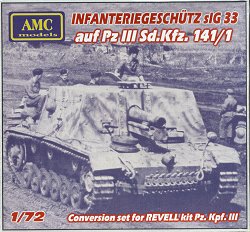 This is one of two kits reviewed here that is based on the new Panzer III kit from Revell. Unfortunately, it is hampered by poor research, and has some serious accuracy problems. The engine deck has been changed from the F/8 style of the Revell kit, to the earlier layout. I find this interesting because there are so many accuracy errors with this kit, it is strange that they got this detail correct. The glacis plate access hatches have been altered from the original, and they now represent something completely fictitious. They resemble the hatches that appeared on some late versions of the Panzer III, and are completely incorrect for the StuIG. This kit does not include the armored plate for the lower glacis. The crew hatches on the rear of the fighting compartment are incorrectly represented as a single, double-door hatch in the center of the rear wall. The rooftop is also completely wrong. The commander's hatch is incorrectly standing above the level of the rooftop, when in fact it should sit flush with the upper plate when closed. It is also placed in the wrong location. There is no ventilator present, and the cover for the gunsight is incorrectly provided as a square. On the front face of the fighting compartment, the machinegun mount is too small, and located too high and too far to the left. The bolts for the armored plating are not pronounced enough, and the strips of armor plating to the sides of the main gun opening are too narrow. All in all, not a good representation of the real item. Considering all of these inaccuracies, this is why I said above that it is interesting that AMC actually changed the engine deck to accurately represent the early style. Another indication of the poor research AMC did for this model is the painting and marking guide included in the instruction sheet (which is a line drawing showing approximate placement of the kit parts), where they show the vehicle numbered "64" when in fact it should be "G4". And finally, I am not very impressed with AMC's quality control, since the model I own is actually incomplete, and is missing several of the small parts. |







